#intertidal invertebrates
Explore tagged Tumblr posts
Text



Slip on the Common Slipper Limpet
The common slipper limpet, also known as the boat shell or the fornicating slipper snail (Crepidula fornicata) is a species of sea snail native to the North American coast of the Atlantic Ocean. In addition, it has been introduced to the eastern coasts of Europe and parts of the Pacific Northwest and Japan. They can reside in a variety of habitats including bays, estuaries, island shores, and rocky intertidal zones; their maximum depth tolerance is 70m (229 ft).
Fornicating slipper snails are noted for their unique mating methods. Adults typically live stacked on top of each other, with up to 12 to 14 individuals in a group. The largest, and oldest adults are at the bottom of the stack, while the younger, smaller adults are at the top. C. fornicata is a sequential hermaphrodite; new adults are all male, and will change into females as they get older or if they become the oldest in a stack of all males.
Breeding can occur between Februrary and October, although the peak season is in May or June. Unlike other marine mollusks, which are broadcast spawners, the common slipper limpet utilizes internal fertilization. The male closest to the female at the bottom extends his penis under her shell and fertilize up to 11000 eggs. These eggs hatch after about 3-4 weeks, and the planktonic larvae are released into the water. These larvae take 4-5 weeks to develop into juveniles, at which point they settle either on bare rock or on top of an established limpet chain. If it settles in isolation, the young adult immediately changes into a female; if it settles on a chain, it remains a male. Adults can live on these chains for up to 6 years.
Adult boat shells are rather small, ranging in length from 20–50 mm (0.7-1.9 in). The shell is distinctly arched, with a flat underside that gives it a slipper-like appearance. The shell can be white, pink, or yellow with red or brown streaks; older adults are often covered in algal growth.
Conservation status: The common slipper limpet has not been evaluated by the IUCN. Although they are commonly harvested for food, populations are considered stable. Outside its native range, this species is considered invasive and harmful to other limpet snails.
If you like what I do, consider buying me a ko-fi!
Photos
Dr Keith Hiscock
Sytske Dijksen
#common slipper limpet#Littorinimorpha#Calyptraeidae#slipper snails#limpets#gastropods#mollusks#invertebrates#marine fauna#marine invertebrates#intertidal fauna#intertidal invertebrates#coasts#coastal invertebrates#atlantic ocean#queer animals#queer fauna#nature is queer
65 notes
·
View notes
Text


This animal was requested!
#pacific coast#north america#cnidarian#hexacorallia#sea anemone#marine invertebrates#invertebrates#invertiblr#marine animals#marine biology#marine life#the intertidal zone
139 notes
·
View notes
Text

🎨 InsertAnInvert 2024
Coastal week 3: Intertidal
carpet sea star (meridiastra calcor)
#art#digital art#invertebrate#invertebrates#halftone#screentone#illustration#nature#animals#InsertAnInvert#InsertAnInvert2024#blue#cyan#noAI#sea#ocean#ocean creatures#sea creatures#animal art#Old Art#sea star#carpet sea star#coastal#intertidal
41 notes
·
View notes
Text
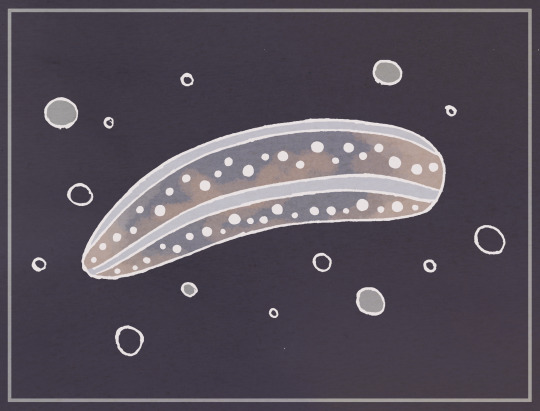
intertidal jellybean (Chiridota discolor)
#art#illustration#animals#invertebrates#sea cucumber#intertidal jellybean#yes that is its real name#nature
8 notes
·
View notes
Text
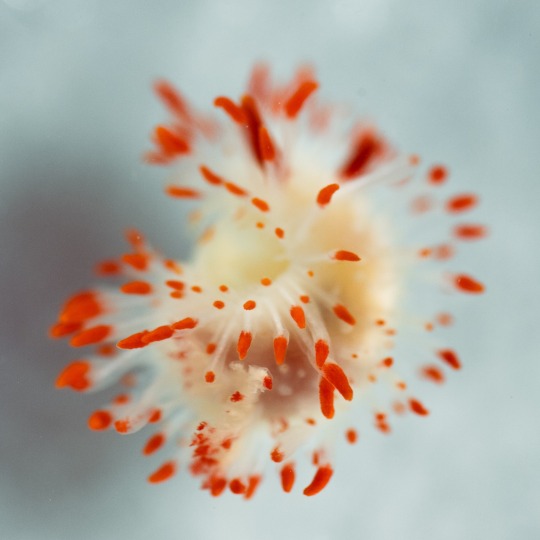
Limacia cockerelli
photography by meg mindlin
#photography#nature#ocean#marine biology#nature photography#nudi#nudibranch#nudibranchs#tasteful nude#wildlife#wildlife photography#macro#macro captures#invertebrates#marine animals#intertidal
11 notes
·
View notes
Text
Wet Beast Wednesday: sea urchins
As I continue the slow grind of covering every living group of echinoderms for this series, it was inevitable that I would eventually encounter the only echinoderm I've actually studied. Sea urchins are among the most iconic of marine invertebrates, but many people just think of them as part of the scenery. I'm here to show you that there's more to these creatures than just being spiny lumps on a rock.

(Image: a purple sea urchin (Strongylocentrotus purpuratus) being held in someone's hand. It is a round, globular animal with a dark purple color. Light purple spines emerge from it all over its body, with the longest being around the middle. End ID)

(image: a long-spined sea urchin (Diadema savignyi). It is a black sea urchin with spines longer than its diameter. End ID)
Urchin is an old-fashioned word for hedgehog, and sea hedgehog is a fitting name for these round, spiny animals. Sea urchins tend to be fairly small, with a diameter of 3 - 10 cm (1 - 4 in), though some species have very long spines that make them seem larger. The main body of an urchin is round and enclosed in a (usually) hard shell called a test made of calcium carbonate. The test is covered with a slayer of skin and muscle that controls the spines and small, pincer-like structures called pedicellaria. Within the test are the internal organs. As with other echinoderms, sea urchins are radially symmetrical as adults, with five segments arranged around the center like pizza slices. The two main body holes are found on the top and bottom of the animals where the segments converge. At the bottom is the mouth and at the top is the anus. Each segment also has a hole near the anus used to release gametes and one will have a larger pore called the madreporite, which is used to control the amount of water within the urchin's body. The mouth is a unique structure known as Aristotle's lantern, consisting of five tooth-like structures (one for each body segment) that interlock together and sharpen themselves. Behind the teeth is a rasping tongue.

(image: a close-up of an urchin's mouth, showing the Aristotle's lantern. It is a hole surrounded by a fleshy lip. Five spade-shaped teeth are emerging from the edge of the hole. End ID)
Internally, most of the body is taken up by the digestive tract and water vascular system. The digestive system lacks a stomach, with the esophagus attaching directly to the small intestine. The digestive tract forms a loop as it passes through the body. The water vascular system uses seawater to form hydrostatic pressure that moves the tube feet. All starfish, urchins, and sea cucumbers have tube feet, small, transparent, tentacle-like structures they use for movement. Tube feet are hollow and retracted into pores on the skin normally. To be used, they have to be inflated with water, which makes them stick out of the body, where they can be controlled with muscles. Tube feet end in suction cups that can be used to grab into structures around them. Seawater drawn in through the madreporite serves as the source of pressure needed for the tube feet to function. In urchins, tube feet cover the body and are used for locomotion, moving food to the mouth, and moving objects on or off the body. The main body cavity is filled with circulatory fluid that uses special cells to move oxygen and nutrients around the body. The nervous system is simple, consisting of a central nerve ring around the esophagus that branches into nerves that connect to the rest of the body. Urchins have no eyes (except for the family Diadematidae, which have eyespots), but are sensitive to light. The gonads are usually small, but during mating season they can swell to fill much of the body cavity.

(Image: a drawn diagram showing a cross-section of a sea urchin, with the different organs and body parts labeled. End ID. Source)
Sea urchins are found in oceans worldwide, from intertidal zones to the deep sea and the tropics to the poles. They are bottom-dwellers who feed primarily on algae, which they scrape up with their teeth. However, they will also take a variety of food, including carrion, aquatic plants, and other slow-moving or sessile animals like sponges, polyps, bivalves, worms, and sea cucumbers. Urchins can play a key role in regulating algae populations through their ecosystems, but they also rely on predators to keep from overeating necessary algae. Famously, California's kelp forests were almost destroyed by urchins eating the kelp after their primary predator, sea otters, were driven to near extinction. Urchin's primary defense against predators is their hard tests and spines. As most of the edible portion of the urchin is within the test, predators have to get through both layers of defense first. The spines are hollow and each can be moved independently of each other, allowing them to be positioned toward a threat. Many species contain venom within their spines as an added layer of defense. This venom is rarely dangerous to humans, but can cause swelling and painful reactions. Another layer of defense is the pedicellaria, which are good at removing small animals and parasites from the skin. The flower urchin, Toxopneustes pileolus, has modified its pedicellaria into flower-like structures that extend beyond the spines and can deliver a sting that can be fatal to humans.

(Image: a flower urchin. It is a pinkish urchin covered with flower-like structures that extend to the length of the spines. It has placed some bits of shells on top of it. End ID)
Sea urchins possess distinct males and females, though the differences are internal, making it impossible to tell which is which based on visual examination. During mating seasons, the gonads swell as they generate gametes. Urchins tend to reproduce in groups at synchronized times (possibly correlated with the phases of the moon in shallow-water species) to maximize the possibility of fertilization. When ready to mate, the gametes are squeezed to empty their contents through the genital pores and into the water column. Sperm must find egg in the water to fertilize it. Most sea urchins provide no parental care, but in some species, the female will retain the eggs in her spines to protect them. The eggs hatch into bilaterally symmetrical larvae called plutei that drift with the plankton. As they develop, a section of the larvae will develop into a radially symmetrical adult rudiment. This piece will eventually break off and become the juvenile urchin while the rest of the larva dies. Because echinoderms start out as bilaterally symmetrical larvae, we can infer that they developed from bilaterally symmetrical ancestors and the radial symmetry of adults is a more recent development.

(image: a series of photos showing the embryological development of a sea urchin from a single cell to a cluster of cells, to a bell-like structure, to growing several arms, to the eventual adult developing and breaking off. End ID. Source)
Fossils show that the oldest sea urchins had large, club-like spines that they walked on, with the modern spines being a later development. Most of those urchins died out with the dinosaurs, leaving the pencil urchins of order Cicaroida as the only living members. All other living urchins are Part of the clade Euechinoidea. Amongst them, there are still some oddballs, known as the irregular urchins of clade Irregularia. These urchins have moved away from radial symmetry, with less symmetrical segments and the anus and mouth moving from being on the top and bottom to being on the sides in the heart urchins. Heart urchins have gone from bilateral symmetry to radial symmetry and are now going back to bilateral symmetry. Heart urchin mouths don't have an Aristotle's lantern. Instead, they use strands of mucus to capture food and cilia to pull the strands back inside. Sand dollars, also known as sea cookies or sea biscuits, are also in this clade. These are flattened urchins with short and very fin spines that resemble velvet. They are burrowers who spend much of their time buried under sand and as such are rarely seen alive. The name sand dollar comes from their tests, which are similar to old dollar coins and can often be found washed up on beaches. While still radially symmetrical, sand dollars also have a secondary form of bilateral symmetry, with a distinct front and back end that often look different. Irregular sea urchins also tend to have fewer gonads and associated pores than regular sea urchins.

(image: a red pencil urchin (Heterocentrotus mamillatus) nestled among coral. Instead of spines, it has a series of long, thick, red clubs. End ID)

(image: a purple heart urchin (Spatangus purpureus). It is an urchin elongated on one direction and with a few rows of long spines amongst short ones. On the surface facing the camera is a large hole that could be the mouth or the anus. End ID)

(image: a group of irregular sand dollars (Dendraster excentricus) partially buried in the sand. They are round, flat animals with a velvety covering of tiny spines. The are sticking out of the sand. End ID)
Sea urchins have been known to humans for as long as people have lived near the ocean. Stings can occur when people step on them and can cause pain and irritation, but are rarely medically significant. That being said, some people can have allergies to the venom, which could be a big problem. Spines left in the wound should be removed, as they can continue injecting venom. Urchins are a food source for people around the world, specifically the gonads, which are the only meaty part of the animal. The gonads are often marketed as roe or corals and can be eaten raw or cooked. Urchins are also used as a model organism in embryology due to the interesting and well-studied nature of their larval development. Urchins are vulnerable to pollution, habitat loss, and over-predation. Ocean acidification due to climate change poses a major threat to them, as it reduces the quality of their tests.

(image: tow sea urchins served as food. They are upside-down with the bottoms removed. The gonads are visible within as five orange, spongy structures that take up most of the body cavity. End ID)
#wet beast wednesday#sea urchin#urchin#sea urchins#echinoderms#invertebrates#invertiblr#sand dollar#heart urchin#pencil urchin#marine biology#marine life#biology#zoology#ecology#animal facts#informative#educational#image described
812 notes
·
View notes
Text
Taking a snailfish stroll 🐌🐟️
Snailfishes (family Liparidae) are a diverse and thriving group of fishes with over 400 described species. They have tadpole-like bodies with broad pectoral fins and tiny tail fins. These fascinating fishes are found globally in all ocean basins, from shallow intertidal waters to the deepest depths of the ocean.
Snailfishes are well-adapted to a variety of habitats, including rocky outcrops, the muddy seafloor, and even the midwater. They play an important role as prey and predator in many ecosystems. Most snailfish species are small and feed on tiny invertebrates, but larger species may prey upon other fishes. MBARI has observed over a dozen species of snailfish in the past three decades of exploration. We suspect there are dozens more out there waiting to be discovered.
138 notes
·
View notes
Text

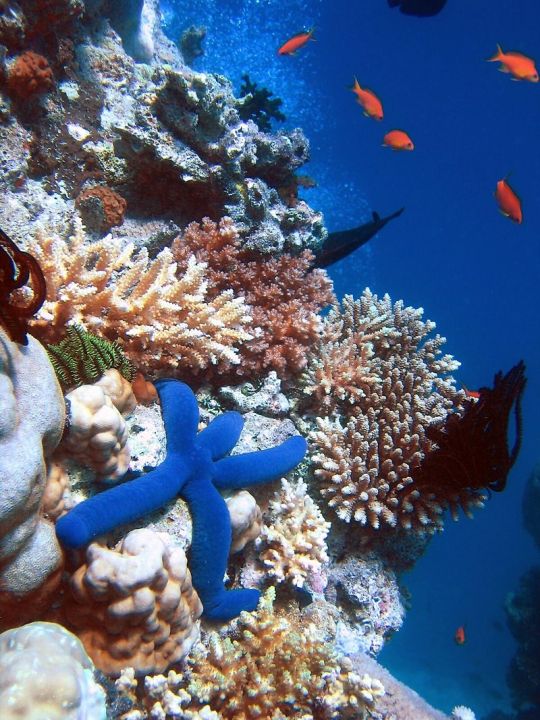
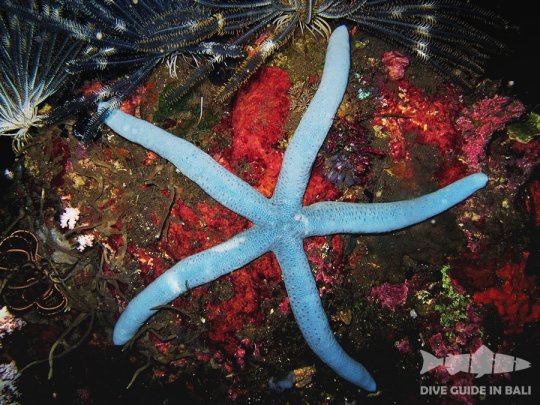
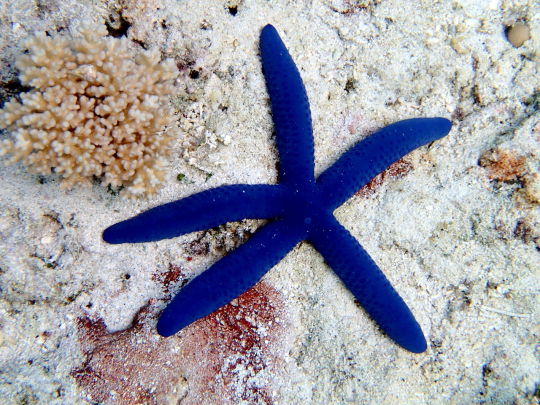

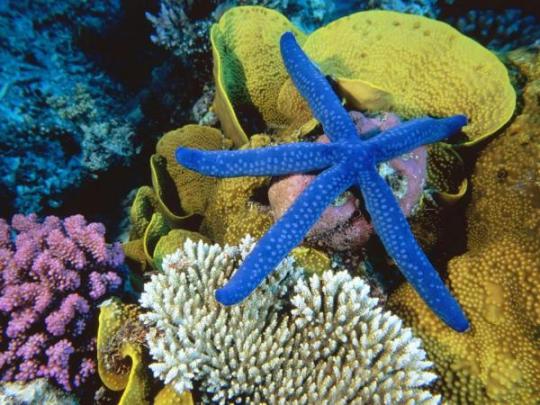




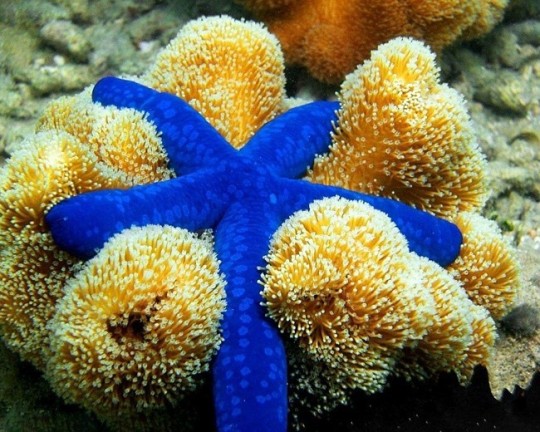
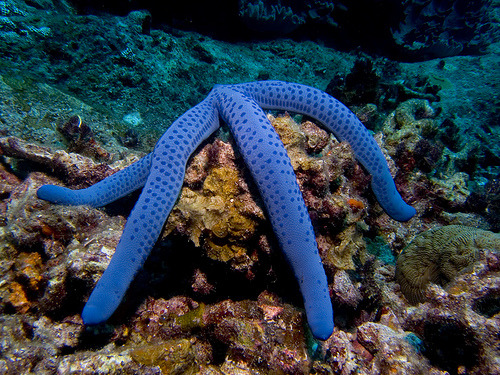
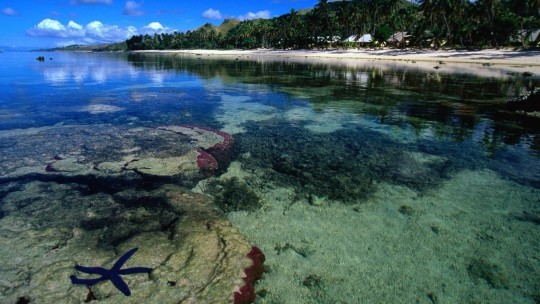
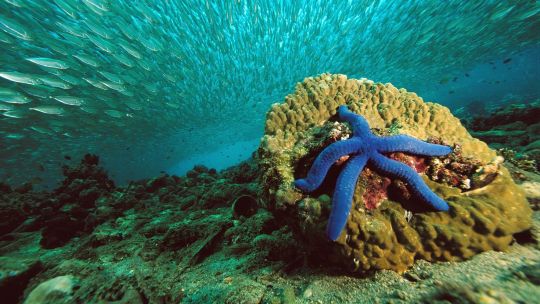
Морская звезда линкия синяя
Linckia Laevigata (: Blue star fish)
Ярко-синяя морская звезда (пигмент линкиацианин) с пятью длинными цилиндрическими лучами. Вырастает до 30—40 см в диаметре. Ярко окрашенное тело защищено твердым известковым скелетом, состоящим из подвижных пластин. Еще одной защитой морской звезды являются шипы, бугорки или иглы, расположенные на верхней стороне тела.. Обитает в водах от западной части Индийского океана до юго-восточной Полинезии в Тихом океане.
Эта звезда встречается в закрытых лагунах, на рифовых плато и на внешних стенках рифов, от приливно-отливной зоны до глубин 25-30 м, хотя иногда встречается также и на глубине до 50 м. Особи, обитающие на мелководье, обладают лазурной или сиреневой окраской, иногда с более темным крапом. Звезды с больших глубин обычно окрашены не так ярко, они бывают сероватых, желтоватых или розоватых оттенков.Предпочитает жить поодиночке, ведя преимущественно ночной образ жизни. В отличие от других родов морских звезд, размножается особым бесполым способом. Самопроизвольно отломившийся луч отползает в сторону, и из него развивается новая морская звезда. У материнской особи на месте утерянной руки вырастает новая.
A bright blue starfish (linkiacyanin pigment) with five long cylindrical arms. Grows up to 30-40 cm in diameter. The brightly colored body is protected by a hard calcareous skeleton consisting of movable plates. Another defense of the starfish is the spines, tubercles or spines located on the upper side of the body. It lives in waters from the western Indian Ocean to southeastern Polynesia in the Pacific Ocean.
This star is found in enclosed lagoons, on reef plateaus and on the outer walls of reefs, from the intertidal zone to depths of 25-30 m, although sometimes also found at depths of up to 50 m. Specimens found in shallow waters are azure or lilac in color , sometimes with darker specks. Stars from great depths are usually not so brightly colored; they are grayish, yellowish or pinkish. They prefer to live alone, being predominantly nocturnal. Unlike other genera of starfish, it reproduces in a special asexual way. The spontaneously broken off ray crawls to the side, and a new starfish develops from it. The maternal individual grows a new one in place of the lost one.
Источник:/allviet.ru/animals/blue-star-fish.html,
telegram Океан, http://akvariumnye-ribki.ru/?do=shop&item=3569,
/aquastatus.ru/viewtopic.php?t=25515,
/ru.wikipedia.org/wiki/Линкия,
http://ru.diveguideinbali.com/news/19-interesnye-fakty-morskie-zvezdy.html,
/akvarium-moskva.ru/akvariumnye_obitateli/morskie-zvezdy.html,
akvarium.org/invertebrates/asteroidea/linckia-laevigata/,
/ru.wallpaper.mob.org/pc/image/animal-starfish-205649.html
#video#animal video#marine life#marine biology#nature#aquatic animals#underwater#echinoderms#starfish#ocean view#ocean#waves#reef#seaweed#sand#animal photography#nature aesthetic#видео#фауна#природнаякрасота#природа#океан#иглокожие#морская звезда#Линкия#волны#риф#кораллы#водоросли#песок
655 notes
·
View notes
Text
80 notes
·
View notes
Text
Round 2 - Mollusca - Polyplacophora
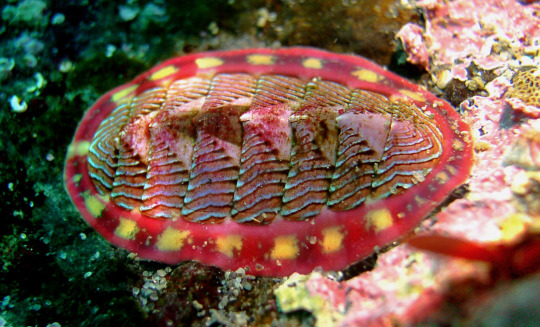
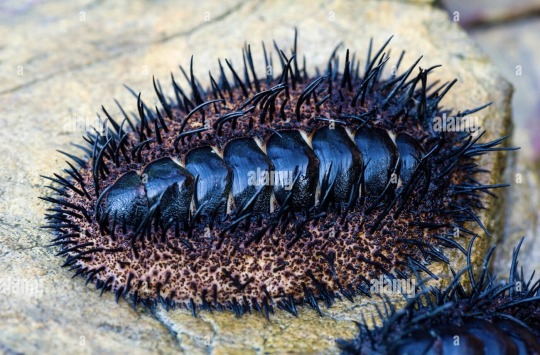
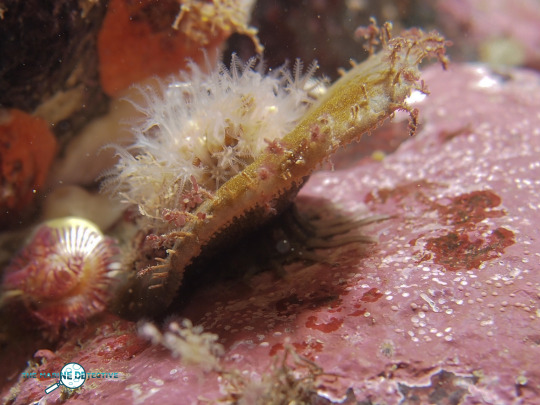
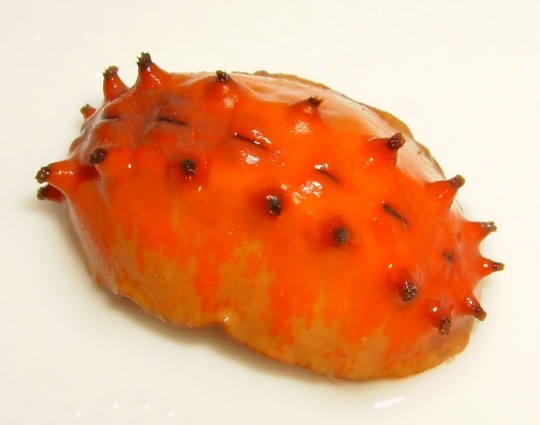
(Sources - 1, 2, 3, 4)
Our first class of molluscs is Polyplacophora, commonly known as “Chitons”, and less commonly known as “Sea Cradles”, “Coat-of-mail Shells”, or “Suck-rocks”.
Chitons have a shell composed of eight separate plates, or valves, which overlap slightly. This allows the chiton to have protection without sacrificing flexibility, as the plates allow for some articulation and even for the animal to curl up into a ball when dislodged from rocks. The plates are circled by a skirt called a girdle, and in some species the tissue of the girdle covers the plates (image 4). Underneath the shell, the majority of the body is a muscular, snail-like foot. Gills hang down into the mantle cavity on either side of the foot. The mouth is also located on the underside of the animal and it contains a mouth with a tongue-like, tooth-covered structure called a radula. The radula is used to scrape food from rocks. Chitons have unique organs called aesthetes, which consist of light-sensitive cells just below the surface of the shell. Some species have modified aesthetes which form ocelli. These ocelli are actually quite advanced, with a cluster of individual photoreceptor cells lying beneath a small aragonite lens. Each lens can form clear images. An individual chiton may have thousands of ocelli on their back. Chitons live worldwide, exclusively in marine waters, clinging to hard surfaces. Most species live high in the intertidal zone, exposed to air and light for long periods. A few species live in deep water, up to as 6,000 m (20,000 ft) down. They are generally herbivorous grazers, though some are omnivorous and some carnivorous. They eat algae, bryozoans, diatoms, barnacles, and sometimes bacteria by scraping the rocky substrate with their radula. A few species of chitons are predatory, catching small invertebrates, such as shrimp and possibly even small fish, by holding an enlarged, hood-like front end of their girdle up off the surface, and then clamping down on unsuspecting, shelter-seeking prey (image 3).
Chitons have separate sexes, and usually reproduce externally, with males releasing sperm into the water to find the female’s released eggs. In some species, fertilization takes place in the mantle cavity, with the female then brooding the eggs within the mantle cavity. The species Callistochiton viviparus gives birth to live young. Chiton eggs have a tough spiny coat, and usually hatch to release a free-swimming trochophore larva. In some species the trochophore remains within the egg, deriving nutrition from yolk, then hatching as a miniature adult. Unlike fully grown adults, larvae have a pair of simple eyes, and these may remain for some time in the immature adult.
Chitons have a relatively good fossil record, dating back to the Cambrian. The genus Preacanthochiton is often classified as the earliest known polyplacophoran, though this is controversial and some authors have instead argued that the earliest confirmed polyplacophorans date back to the Early Ordovician. Kimberella and Wiwaxia of the Precambrian and Cambrian may be related to ancestral polyplacophorans.

Propaganda under the cut:
There is a good fossil record of chitons, but ocelli are only present in those dating to 10 million years ago or younger. This could mean chiton ocelli are the most recent eyes to evolve.
Some species of chiton exhibit homing behavior, journeying to feed and then returning to the exact spot they previously inhabited. It is yet unknown how they do this. They may have topographic memory of the region, or they may be picking up on chemical clues from their slime trail. Their teeth are made of magnetite, and they may be able to sense the Earth’s magnetic field through them, as experimental work has suggested that chitons can detect and respond to magnetism.
Chitons are eaten in many oceanic cultures, including in Trinidad, Tobago, The Bahamas, St. Maarten, Aruba, Bonaire, Anguilla, Barbados, Bermuda, the Philippines (where they are called kibet if raw and chiton if fried), along the Pacific coast of South America, the Galápagos, South Korean islands, by First Nations people off the Pacific coast of North America, and by Aboriginal Australians.
When a chiton dies, its girdle will rot or be scavenged away, and the eight plates will come apart. These plates sometimes wash ashore and are known as “butterfly shells.”
Some chitons bear scales or needle-like spicules on their girdles which can be used for camouflage or defense:
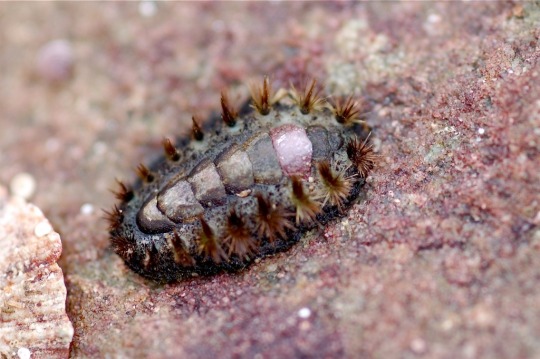
(source)
77 notes
·
View notes
Text
Fish of the Day
today's fish of the day is the giant pacific octopus!

The giant pacific octopus, also called the North Pacific Octopus, scientific name Enteroctopus dofleini, is known for being the largest species of octopus! Living exclusively in temperate waters, their range stretches from Southern California up to Alaska, and from the West coast of Northern America, to the Aleutian Islands, and East coast of Japan. Giant pacific octopi live along coral ranges, rocky outcroppings, and intertidal zones where catching prey is easier. The bite of the giant pacific octopus contains a venom that breaks down proteins in animals, softening muscle tissues and organs over the course of a few hours. Their diet consists of almost anything they can fit in their beak: fish, crabs, lobster, shrimp, some smaller sharks and dogfish, clams, snails, and seagulls. They can tear apart animals with far tougher skin than their own due to a beak structure that can be found on all octopi, made of chitin. This diet can support them getting sizes as large as 29 feet! Their arm span alone can reach 19 feet across, and the heaviest recorded specimen was almost 200 pounds!

Many scavengers predate on octopi, and the great pacific octopus is no different, even drawing in larger predators due to their size. Many marine mammals, such as harbor seals, sea otters, various dolphins, and sperm whales have been found hunting great pacific octopi, along with large sharks. Humans also hunt great pacific octopi with commercial fishing for consumption across the world, taking 3.3 million tons annually. However, great pacific octopi are especially known for their high intelligence, which is used to avoid many of these predators. Octopi are known for being able to survey their surroundings and camouflage at will in many different ways. These animals have 9 brains, one in each of their 8 arms and a central brain, which does more than the others, each of the arms controlling over 200 suckers, which they have the control over like we do of our individual fingers, giving them high control over their movements. Along with the ability to create havoc in research environments, dissasemling expensive equipment, and escaping.

Like many other cephalopods, the giant pacific octopus can change colors, using this to blend into the rocks around their hiding caves. This color changing ability is quite interesting for study however, when the octopus is resting they turn a milky white color, and when the octopus is occupied by other worries, they turn a deep red color. However, it is found that throughout an octopus's rest they will change into molted patterns that are also found in alert octopi: leading to the theory that octopi too, can dream. In other situations, these octopi have been known to create molted patterns to seduce partners, and to confuse prey. Other than their color changing abilities, they also have been known to surround themselves in shells and other remains of previous meals, to disguise their body when venturing for food. These animals also possess the well known ability to squirt ink out of their siphon, used to confuse predators. They also have been known for changing the texture of their skin, to blend in better with their surroundings. Their intelligence is so high that it is thought the octopi are some of the only invertebrates that engage in play activities.

Giant pacific octopi spent around 90% of their time inside of dens, venturing out only to find prey, and bringing them back into the den to consume. This creates an 'octopus garden' on the outside of the den, where there are piles of bones and shells piling up. However, depending on population, throughout the year these octopi will migrate, in accordance to seasonal changes. Eastern populations tend to locate new dens when the water experiences temperature changes in summer and winter, whereas western populations will move dens to shallower waters in early summer and winter, and then move to deeper waters in the later summer and winter. Northern populations, both the Alaskan and Northeastern, do not seem to have migration patterns.

Their lifespan is relatively long compared to other octopi. Sexual maturity is achieved at 1-2 years of age, but the giant pacific octopus, with a lifespan of 3-5 years, will wait until it reaches a sufficient body mass. This is because a giant pacific octopus will only ever go through one sexual event in a lifetime. After laying eggs within their den, males will fertilize. The female octopi will then brood over these eggs for 6 months, refusing to leave the den for any purpose, eventually dying of starvation, just as the eggs hatch. Eggs are cared for, by having the mother keep them well aerated with cool water from her siphon, and she'll clean them to ensure algae or parasites wont prey on the eggs. Males will also die after reproduction, although they will do this in their own dens. After hatching, the eggs grow quickly, reaching adult sizes within a year. Thus, continuing the cycle.

Have a wonderful day, everyone!
#fish#fish of the day#fishblr#fishposting#aquatic biology#marine biology#freshwater#freshwater fish#animal facts#animal#animals#fishes#informative#education#aquatic#aquatic life#nature#river#ocean#pacific#octopus#giant pacific octopus#Enteroctopus dofleini
74 notes
·
View notes
Text
Phylum Round 1
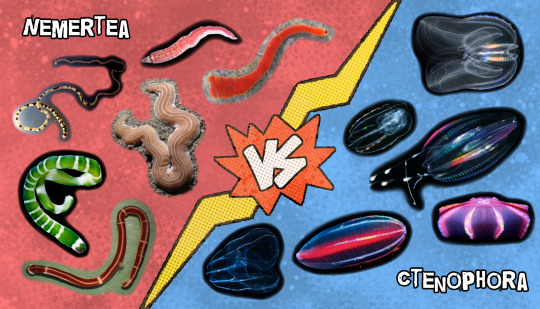
Nemertea: Ribbon Worms. These simple organisms are mostly seafloor-dwelling, but some may live in freshwater or even on land. Most are predators of small invertebrates, but some are herbivorous or symbiotic with a host. Instead of crawling, Nemerteans secrete a thick mucus and use thousands of tiny hair-like cilia to glide across the slimy surface. Their most distinctive feature is their internal proboscis, which can be everted inside-out of their bodies and used to capture prey.
Ctenophora: Comb Jellies. The largest animal phylum to swim using hair-like cilia. Their cilia are arranged in rows, called combs or ctenes, down the length of their body. The cilia move in a wave-like pattern that generates colorful reflecting light shows. Almost all Ctenophores are predators of small plankton as they drift in the ocean. They inhabit a variety of marine habitats from the coastal intertidal to the open ocean.
#nemertea#ctenophora#animal bracket#tumblr bracket#bracket tournament#poll bracket#phylum round 1#phylum
142 notes
·
View notes
Text
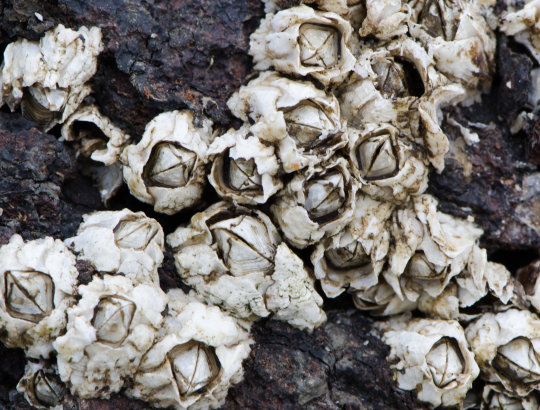
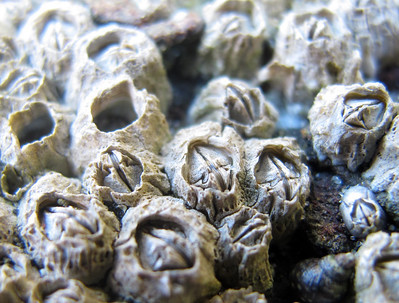
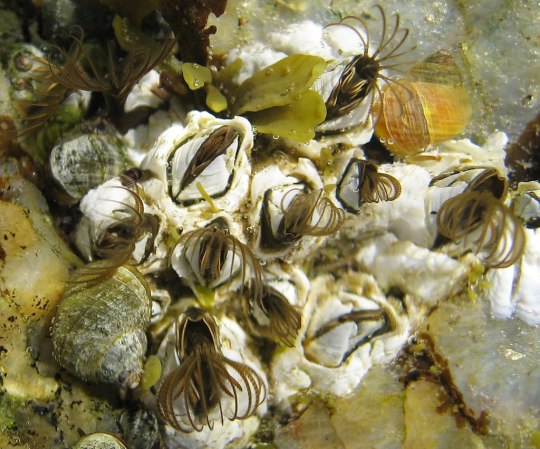
Common Acorn Barnacles on Call
Semibalanus balanoides, more commonly known as the common acorn barnacle or the northern acorn barnacle, is a widespread species of barnacle found all along the Pacific and Atlantic coasts of North America and the intertidal zone of Europe-- though it is notably absent from the Bay of Biscay. Its range is limited by the temperature of the water in which it breeds; in the winter, they require water as cold as 7.2 °C (45.0 °F), but throughout the rest of the year they can tolerate much warmer climates.
Like many barnacle species, S. balanoides is hermaphroditic, meaning it has both male and female reproductive organs. Once the water reaches the optimal temperature, typically in November or December, the barnacles begin to breed. An individual will reach out with a penis that can be up to 7.5 centimetres (3.0 in), and inseminate a nearby barnacle; this process may be repeated up to eight times between a single pair. After insemination, the penis disintegrates to be regrown the following year.
In the meantime, the fertilized barnacle will produce up to 10,000 eggs that are stored in a special sac within the shell cavity. The common acorn barnacle releases its eggs between February and April, in concert with warming waters and the spring algal bloom. The eggs then hatch into miniscule larvae, which spend several weeks feeding on plankton in the water column and going through a series of molts. Following the sixth molt, the larvae stops feeding and seeks out a suitable place on which to anchor itself. Once it has found a surface, the larval barnacle 'crawls' along the surface until it encounters one of its own species. At this point, they will attach themselves with a cement-like glue which is capable of supporting up to 3,200 kg (7,000 lbs) Here, a single northern acorn barnacle may live anywhere from one to seven years.
Adult S. balanoides are identified by the white, six-sided limestone casing with which they protect themselves. However, one unique feature of this species is the way in which they attach themselves to their chosen surfaces; unlike other barnacles, which have a hard calcified shell base, the northern acorn barnacle has a membranous base. Within their shells, they have rather soft bodies, including a set of feathered appendages called cirri with which they use to breathe and collect food.
The common acorn barnacle is a filter feeder, consuming microscopic plankton and bits of detritus from the water column. Though their hard shells deter most predators, adults are vulnerable to other predatory invertebrates like dogwelks, nudibranches, and sea stars, as well as fish like the shanny that are specialist feeders of barnacles.
Conservation status: The common acorn barnacle has not been assessed by the IUCN. The species is extremely common and very resilient, and in fact has been in existence since the Jurassic period. However, rising ocean temperatures may negatively affect their breeding period.
If you like what I do, consider leaving a tip or buying me a kofi!
Photos
Neil DeMaster
Oregon State Parks and Recreation
Kim Hanson via Wikimedia commons
#common acorn barnacle#Balanomorpha#Balanidae#acorn barnacles#barnacles#crustaceans#arthropods#marine arthropods#intertidal arthropods#coastal arthropods#atlantic ocean#pacific ocean#animal facts#biology#zoology
124 notes
·
View notes
Text
October 10th, 2023


Ragworm (Hediste diversicolor)
Phylum: Annelids
Distribution: Native to the north-east Atlantic, from the Baltic and North seas to the Azores and Mediterranean seas. Also found in regions of the north-west Atlantic, such as the gulfs of Maine and St Lawrence, and Cobscook bay.
Habitat: Benthic; sand or mud of beaches and estuaries in intertidal zones, including areas of low salinity.
Diet: Varied and adaptable. Predator and general scavenger; feeds mainly on phytoplankton, zooplankton, diatoms and bacteria, as well as detritus, feces and aquatic plants.
Description: Ragworms are polychate worms in the Nereidae family. At maturity, they can reach up to 10 centimetres in length (4 inches) with up to 120 segments. they swim along the sea floor using the bristly parapodia found on either side of each segment.
Ragworms create U-shaped burrows in soft substrates, then creates a water current in order to draw in particles, which are trapped in a mucus net it sets at the entrance of the burrow. If there are no available particles to trap, ragworms will emerge from their homes and hunt for small invertebrates. They're also one of the few animals known to garden; they will draw cordgrass seeds into their burrows and allow them to sprout in order to produce their own food.
The name diversicolor stems from the fact that, as the breeding season approaches, the ragworm's color will shift from brown to green; males, usually indistinguishable from females, turn a bright green, while the females' dorsal surface takes on a dull green coloration. During the mating season, the male will approach a female's burrow and release pheromones, then will release sperm at the entrance of the female's burrow. She will then draw in the sperm using a water current. After spawning, both the male and female die.
The ragworm is a model laboratory animal for research, as well as to evaluate sediment quality. It is also commonly used as bait for sea fishing.
(first picture and video by me, second by Eric A. Lazo-Wasem)
Video of a ragworm swimming under the microscope under the cut!
24 notes
·
View notes
Text
As I was falling asleep last night with my phone playing intertidal zone sounds (close enough), I had a strange m-shift. Invertebrate m-shifts are hard to explain because it is just so alien. It doesn't map cleanly onto a human-shaped brain, just like ph-shifts don't map right onto a human-shaped body and have to improv. I was not scared or any other recognizable "emotion". I was confused, but not in the way one wonders what is going on or what's happening. Confused like I was trying to do something and kept failing to do it, and not exactly wondering why it wasn't working or getting frustrated, but knowing something was going wrong. Except I wasn't actively trying to do something -- just existing in a human body. My isopod brain was confused by the weird body it was in and didn't know what to do about it. In avian and mammalian m-shifts, I always retain sapience and usually can even go about my human activities. I have never felt confused during an m-shift before.
I wish for more invertebrate therians to talk about and describe their shifts. Specifically m-shifts. It's such an interesting experience that more people should know about, and I bet lots of people do.
20 notes
·
View notes
Text
They aren't becoming an amphibian shark lineage, their terrestrial adaptations are about conserving oxygen (not active gas exchange) and moving inbetween tidepools at the time of ebb. They aren't adapted to eat anything terrestrial and they can't chase prey on land.
The evolution of the Amphibian class happened during the carboniferous where the atmospheric oxygen content was about 35% (it's only 21% now), the land lacked large predators and it had prey that reproduced rapidly on land.
Epaulette sharks are adapted to conserving oxygen, but not to replenish it from the air, they don't have an organ that is all that close to a lung (they lack a swim bladder) like early tetrapodimorphs (stem amphibians) had.
Unless the terrestrial ecosystems surrounding their habitat collapse and only leave behind generalists that are easy prey, they will just keep this fairly normal intertidal niche that a lot of invertebrates have.
Did you guys know that the most recent version of sharks have fins that are kinda leg like and they like to walk up onto land?
183K notes
·
View notes